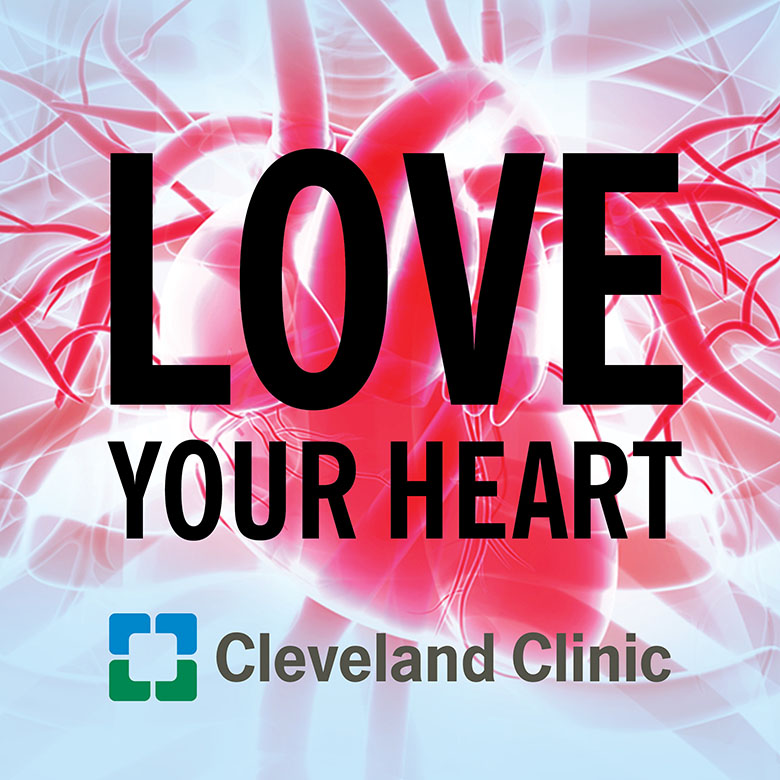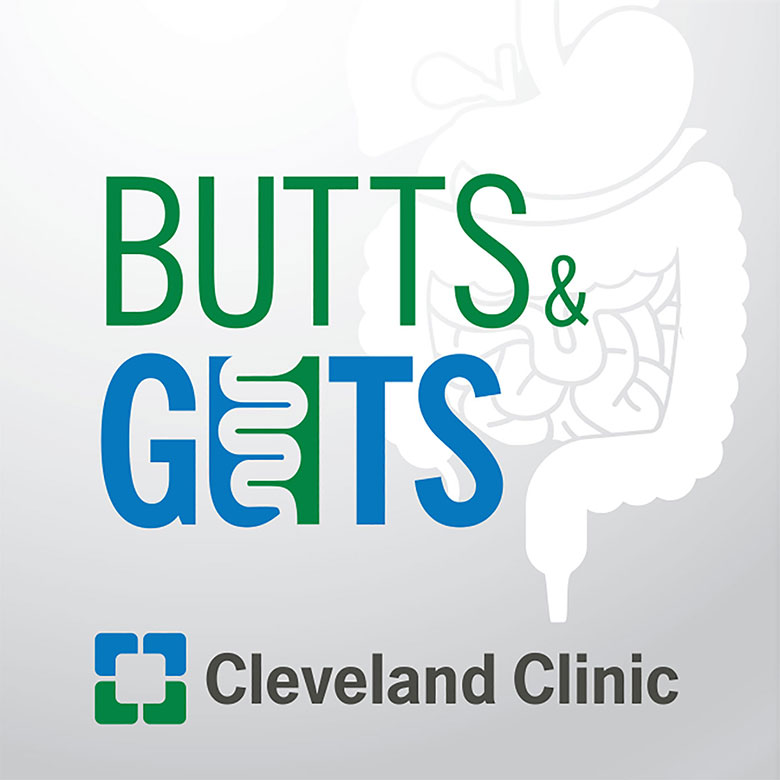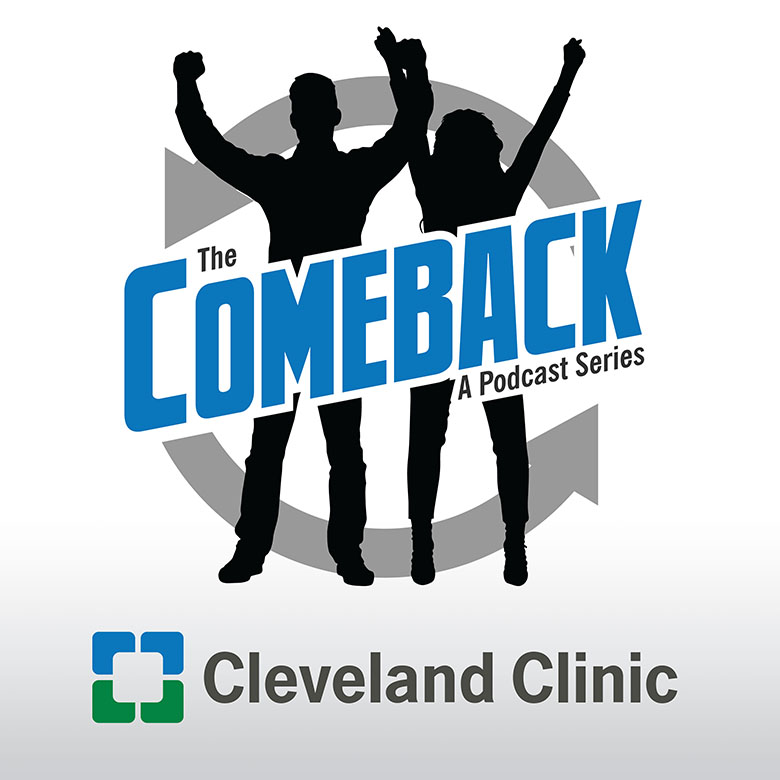Peripheral Artery Disease: Part 1

Peripheral Artery Disease (PAD) is a chronic circulatory condition, which, if not treated, can lead to limb amputations. PAD affects nearly 20 million Americans. An estimated 200,000 people, disproportionately from minority communities, suffer avoidable amputations every year. Dr. Scott Cameron, Section Head for Vascular Medicine at Cleveland Clinic, hosts a 2-part, multidisciplinary panel discussion. Drs. Luke Laffin, Teresa Wu, Aravinda Nanjundappa, and Jon Quatromoni share their thoughts as experts in their fields. Part 1 highlights screening and testing, diagnosis and when to operate.
Learn more about the Section of Vascular Medicine
Looking to schedule an appointment? We would be happy to help. Please call Toll-free 800.223.2273, ext. 44420
Subscribe: Apple Podcasts | Podcast Addict | Buzzsprout | Spotify
Peripheral Artery Disease: Part 1
Podcast Transcript
Announcer:
Welcome to Love Your Heart, brought to you by Cleveland Clinic's Sydell and Arnold Miller Family Heart, Vascular and Thoracic Institute. These podcasts will help you learn more about your heart, thoracic and vascular systems, ways to stay healthy, and information about diseases and treatment options. Enjoy.
Scott Cameron, MD, PhD:
Good evening. My name's Dr. Scott Cameron. I serve as the Section Head of Vascular Medicine. I'm a vascular cardiologist and I have the privilege to introducing to a distinguished panel of physicians and surgeons that form a comprehensive treatment team for peripheral artery disease.
So immediately to my left, I'd like to introduce Dr. Luke Laffin, who's from the Preventive Cardiology section. Immediately to his left, I'd like to introduce Dr. Teresa Wu, who's from the Vascular Medicine section. Immediately to her left, I'd like to introduce Dr. Aravinda Nanjundappa, who's an interventional cardiologist, and he divides his time equally between Cardiology and Vascular Medicine. And immediately to his left, I'd like to introduce Dr. Jon Quatromoni, who's one of our distinguished vascular surgeons.
So if I could just open it up and discuss some things that general physicians and sometimes patients are not always aware that when you're walking, you may have some narrowing in the arteries in the legs. Everyone's familiar with the concept of narrowing in arteries in the heart that can cause a heart attack, for example. But not everyone knows that in fact, if you've got narrowing in the arteries in the leg, not only can it be painful while you're walking, but that actually increases your heart attack risk and your stroke risk. And it turns out that recognizing those symptoms might suggest you have peripheral artery disease as the first step.
Once that you've recognized it, you may want to think about, is this something that needs to be treated medically? Is this something that needs to be treated, for example, by placing a stent to open up a narrowed artery? Or is this something that's serious enough that actually requires very open but very highly skilled surgical procedure here at the Cleveland Clinic? So firstly, I'd just like to call in Dr. Teresa Wu. If you could maybe tell us what your practice pattern has been when you have patients referred to you for peripheral artery disease, what are their typical symptoms and what are the first tests that you would do?
Teresa Wu, MD:
Yes, of course. Thank you so much. And thank you for having me. I think this is great to be among so many faces from different departments to talk about such an important topic. And to echo what you had just mentioned, I think screening is something that is under discussed, but I think is so important. Because globally, PAD or peripheral artery disease, affects about 12 percent of the population. But in high-risk groups, this can be as high as 20 percent. And as you mentioned about half of these patients do suffer from coronary or cerebral vascular disease, which are huge causes of morbidity and mortality in these patients.
So I think as providers, as all providers, we should be proactive in screening these patients and especially those who are high risk for peripheral artery disease. And the kinds of patients that we tend to see this in are patients who are over 65 and also those under 65 with risk factors. That includes things like diabetes, atherosclerosis in another vascular bed. So for example, with coronary disease, hypertension, CKD, and this is also supported by the most recent guidelines that supports screening in these patients.
And so the way that we do that is we can order something called an ankle brachial index or an ABI. And what that basically means is that we take the higher of the two blood pressures obtained in the ankle on one limb divided by the higher of the two blood pressures obtained in the arms, and we use that as a type of a screening test. If that is not done, then at the very least I think comprehensive clinical screening should be done, and that's supported by the recent guidelines as well. So that involves doing a thorough history taking, asking about symptoms of claudication, doing a good pulse exam and checking blood pressures in both arms at the very least. But the kind of step beyond that that we traditionally use is the ankle brachial index.
Scott Cameron, MD, PhD:
Wonderful. Well, let me ask a question. Dr. Laffin, you are a distinguished investigator as well as a physician, and one of the things that I know that the Preventive Cardiology section does particularly well is looks at things, for example, optimizing blood pressure, optimizing lipids. But there's a special tool that you've got in your armamentarium that I don't think everyone's available or they know about. Tell us a little bit about supervised exercise training.
Luke Laffin, MD:
I think that's a great point, Dr. Cameron. Supervised exercise training is covered by CMS and it's essentially cardiac rehabilitation, but for patients with peripheral arterial disease. And we know that cardiac rehabilitation is under-prescribed supervised exercise therapy is vastly under prescribed in this population. And it's very similar, it's an exercise and educational program for 36 sessions.
So it's not just going down and walking on a treadmill, it's more than that, okay? Working with nurses, exercise physiologists to not only get people to the point where they're actually achieving claudication in their legs and hopefully improving it, but also working on risk factors. Getting them hooked up with smoking cessation resources. Making sure they have the dietary resources. Speaking with our nutritionist, et cetera, and making sure their risk factors are controlled like blood pressure, like cholesterol. So covered, vastly under prescribed and patients derive so much benefit from it.
Scott Cameron, MD, PhD:
Fantastic. I might skip over to Dr. Quatromoni. So we've shared many patients together. I know one of the things that you always emphasize, which we greatly appreciate is we have such a fantastic working relationship between the different departments at the Cleveland Clinic and Vascular Surgery is well aware of all the screen tests of course, as well as medications to help patients with peripheral artery disease. Can you maybe tell us what your practice pattern's been for that patient who might have been medically optimized but is still having severe pain when they walk, for example, but they've not gotten to the point where they have tissue breakdown. How would you have a conversation with a patient about things that you can offer?
Jon Quatromoni, MD:
I think everybody's a little bit different. And in that situation, sorry, you said that they had been optimized already? So I think that that's the first discussion, is making sure that all their medications are optimized and that they're aware of things, resources that we have to offer, smoking cessation counselors, plugging them into the system. And I do talk to them about structured exercise therapy as an option. And one of the hurdles I found is that we certainly have that resource locally, but kind of getting them plugged in, maybe if they're geographically maybe a little bit further away, that seems to be a common problem that I face. But I think it's working together from both the medicine side as well as getting them involved in that kind of program I think is important.
Scott Cameron, MD, PhD:
And sometimes a referral will come to us because a patient has a wound in the leg and it's sometimes challenging for us to tell, is this wound because they've got untreated diabetes, for example, or undertreated diabetes? Is it because that the blood vessels coming out of the legs, the veins are not working properly? Or is it because that the blood flow isn't what it should be going into the legs, the arteries? Dr. Nanjundappa, you see many patients with tissue loss and wounds and ulcers, for example, that are caused by peripheral artery disease. I wonder if you could maybe tell us some of the things that you've been able to do for patients to help those wounds heal when medications otherwise can't do that.
Aravinda Nanjundappa, MBBS, MD:
Thank you so much. Thank you, Dr. Cameron for involving me with this, and I'm honored to be with the esteemed panel of guests here. These patients were, as you mentioned, we call the term as CLI, which is critical limb ischemia, and even the fancier term is the CLTI. But these patients basically are at high risk for losing the limb. Basically, as Dr. Wu mentioned, their ankle brachial index is typically less than 0.4. What it means is they have a multi-level disease. They may have aortoiliac disease, SFA popliteal disease, below knee artery disease.
Typically, these are all total blockages and total occlusions. The first thing I do is try to summarize all the things that we talked about from what Dr. Quatromoni, Dr. Laffin said, and also what Dr. Wu is mentioning about maximizing medical therapy. The short pneumonic form is A, B, C, D, E. A is for aspirin, B for beta blocker. If they have heart disease, C for cholesterol management. D for diabetes management. E is education, which involves supervised exercise program also for tobacco cessation and education about the disease itself because they have a high risk for heart disease and stroke.
So once I touch base with them, we don't have much time, so we kind of have to move fast because the wound can get worse. Rest pain can become a limb loss. So such patients, we do try to schedule for what is called an angiogram based on what kind of imaging we already have, whether they have an ABI or a CT scan. And at the imaging we kind of had to pause and have a multi-disciplinary approach. What I mean by that is can a vascular surgeon provide a good long bypass, especially if there's a good piece of vein? With the recent clinical data showing in the BASIL trial that if you have a long piece of vein, the patient does well, the long term outcomes are good.
But typically in diabetes patients in certain disease, they may not be able to find a long vein. They may not be good targets. Such patients, we do offer endovascular approach, and at the end of the day, it doesn't really matter whether I do it or my colleague, Dr. Quatromoni does, or the radiology people does. It's at the end of the day, who can get the best option for the patient. And typically you want to establish a straight in flow. That means just not treating iliac disease by me is not enough. You got to come from top to bottom and establish a palpable pulse at the end of the procedure. Sometimes it's a hybrid procedure I can offer. What I mean is Sean Lyden and may do a common femoral endarterectomy and then at the same time do a balloon angioplasty or I may work with him and establish the flow. Sometime we stick the leg and the groin together and establish a flow it's called pedal access. Rarely, if all this fails, Dr. Lyden's still the principal investigator for a trial where we call deep wound revascularization. We puncture the artery to the vein and put stents so that patient forms a loop of blood flow to keep the foot alive. So you got to go all extreme to get it done. Sometimes those intervascular procedure fails, but still we can do a bypass. Two short points I want to touch base is, I'm only a plumber, I can fix what I can, but you need a multidisciplinary approach. What I mean by that is doctors like you and Dr. Wu can help me to do what is the best antithrombotic therapy, antiplatelet therapy. Endocrinologist to help in diabetes management. Vascular surgery to help us with further any more things to be done, wound care for wound debridement. And sometimes the podiatrists plays a big role to help us in seeing how much more blood supply we need or what we have done is enough. And of course, if things don't turn out to be well at some point, even some partial amputation so that wound doesn't spread and cause gangrene. So, a regular follow-up is needed.
Scott Cameron, MD, PhD:
Well, that's a nice segue actually to go firstly, back to Dr. Wu and Dr. Quatromoni. You talked a little bit about an angiogram, which is a test that you can use by accessing a blood vessel sometimes in the wrist, sometimes in the groin, and it allows you to see where there are blockages in arteries. Of course, that's an invasive test. Dr. Wu, I wonder if you could maybe tell us a little bit about the collaborative Vascular Lab that's run between Vascular Medicine and Vascular Surgery where we can use a non-invasive test to sometimes tell exactly what's going on? Tell us your expertise there.
Teresa Wu, MD:
Of course. So we have a great Vascular Lab that operates between a collaboration between Vascular Medicine and Vascular Surgery where we can do a lot of non-invasive kind of testing to not just screen for vascular disease, but also perform surveillance of vascular disease. Whether or not it's before or after a procedure or a surgery is done. And so what that can look like is not just an ABI, which we had talked about earlier, but also we do arterial duplex ultrasound to take a look at specifically the anatomy of the vessels. And it's a great tool that we also have for surveillance after any sort of procedure or surgery.
Scott Cameron, MD, PhD:
Got it. And Dr. Quatromoni, for our patients that are watching, I wonder if you could tell us what expectations would be for recovery time if someone has required to undergo a surgical procedure and how you would utilize our well acclaimed Vascular Lab at Cleveland Clinic for surveying those vessels and stents to make sure they're still open?
Jon Quatromoni, MD:
Sure. So particularly after an open revascularization, I think it's readable if everything goes well to be in the hospital for three to five days. Sometimes patients would benefit from physical therapy and they can go to a facility to get stronger for a little while. But once you have that initial experience of the operation, it really starts a lifelong relationship where surveillance is very important. Typically patients will come into the office and it's very convenient. They'll have their duplex ultrasound following their bypass, their ankle brachial index at that time, and we kind of set up a regular surveillance regimen in line with SVS guidelines to make sure that if there is an issue that's developing, that we can catch it ahead of time and do something about it. But typically, that three-to-five-day range is reasonable to expect in the hospital after that surgery.
Announcer:
Thank you for listening. We hope you enjoyed the podcast. We welcome your comments and feedback. Please contact us at heart@ccf.org. Like what you heard, subscribe wherever you get your podcasts or listen at ClevelandClinic.org/LoveYourHeartPodcast.

Love Your Heart
A Cleveland Clinic podcast to help you learn more about heart and vascular disease and conditions affecting your chest. We explore prevention, diagnostic tests, medical and surgical treatments, new innovations and more.


